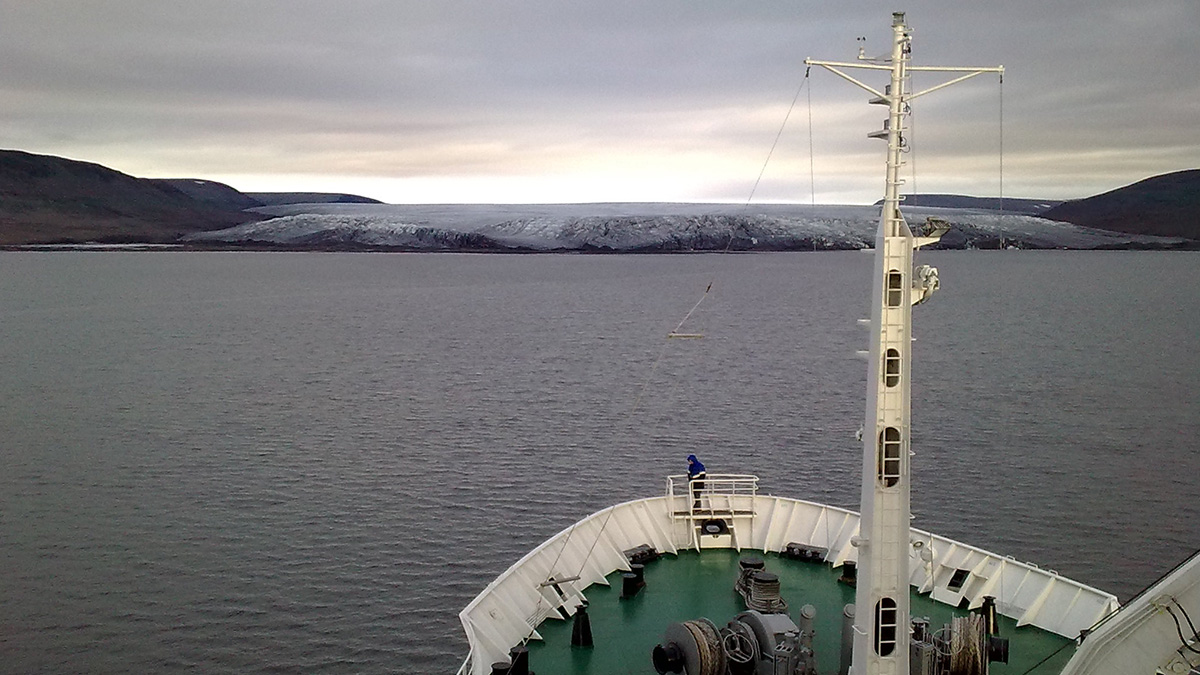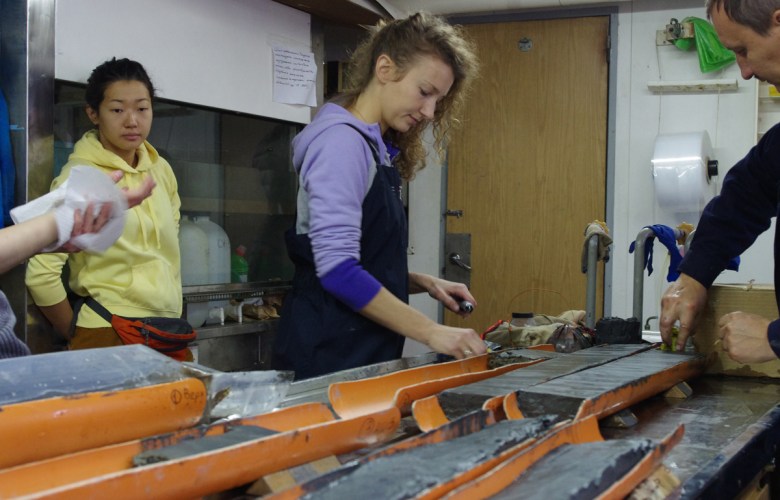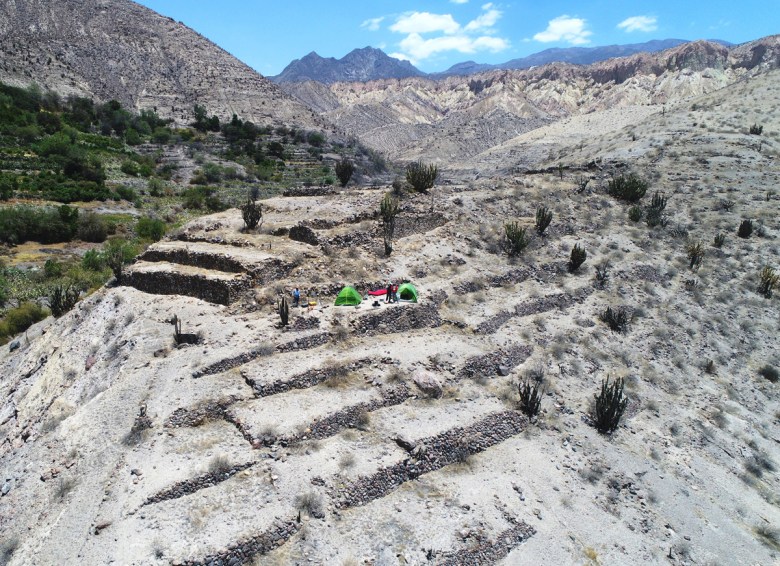A team studying Russian glaciers found
evidence that a volcanic eruption in southern Peru changed the planet’s climate
at the beginning of the 17th century.
By Santiago
Flórez11 October 2022

Researchers
aboard the R/V Akademik Mstislav Keldysh made an expedition to
the Russian archipelago of Novaya Zemlya in 2017 to extract sediment cores from
fjords. Credit: Valeriy Rusakov
On
19 February 1600, the Huaynaputina volcano in southern Peru had the biggest
eruption in the recorded history of South America. The eruption column was 32
kilometers tall, and an estimated 13 cubic kilometers of magma were released.
A
multidisciplinary team recently published a study in Quaternary Research supporting
the idea that a year after the Huaynaputina eruption, its climate effects led
to global cooling and catastrophic crop failures in northern Europe. In turn,
these food shortages contributed to the Great Famine that
killed a third of the Russian population.
Sediment Cores from an Arctic Archipelago
In
2015 and 2017, a group of students, doctoral candidates, and professors from
different disciplines participated in an expedition to Russia’s Novaya Zemlya
archipelago, one of the least explored regions in the Arctic and one that can
be accessed only by ship.
The
expedition collected sediment samples from seven fjords in the archipelago. All
teams had access to a workstation and laboratory on board the R/V Akademik
Mstislav Keldysh, where the samples were cut in half lengthwise. One half
was saved for scanning at an onshore laboratory, whereas the other half was
analyzed on board the ship for factors such as grain size, mineralogy,
chemistry, and biology, explained Valeriy Rusakov, lead
author of the study and a geologist at the Vernadsky Institute of Geochemistry
and Analytical Chemistry at the Russian Academy of Sciences.


Scientists
on the 2017 expedition study sediment cores from Novaya Zemlya. Credit: Valeriy
Rusakov
In
analyzing core samples dating to the 17th century, the team found a sharp
decrease in sedimentation rates, finer grain composition, and smaller biogenic
remains of marine organisms. These results suggest a sudden onset of colder
weather.
Global Cooling in Historical Records
The
team studied historical documents as
well as scientific samples. They found that the “drastic decrease in
sedimentation in the fjords” in Novaya Zemlya coincided with written records of
both the 1600 Huaynaputina eruption and extreme cold weather around the
world, from crop failures in northern Europe to a 2-week change in
blossoming peach trees in China.
This
cooling “led to the Great Famine of 1601–1603, which led to the change of
ruling dynasties in Russia,” said Rusakov. (The dynasty that emerged, the
Romanovs, led Russia until 1917.)
Heli Huhtamaa, an
assistant professor at the University of Bern, Switzerland, was not involved
with the new research but concurs with its general findings. According to her,
the Huaynaputina volcanic eruption is considered to be the most likely culprit
of the cold weather experienced in 1601 because the eruption released high
quantities of sulfur to the atmosphere. These volcanic gases, which damage foliage and discourage plant growth, took
as long as a year to reach northern Europe.
The
“coolness of the [1601] summer was a result of these volcanic aerosols high in
the stratosphere…and that led to extreme harvest loss,” said Huhtamaa. As an
example of that loss, she pointed to church records from
the municipality of P?yty?, Finland, which document that of the 142.7 barrels
of rye seeds that were sowed in 1601, only 1 barrel was able to be harvested.
(A barrel is equivalent to about 146.5 liters.)
“Historical
reconstructions of unrecognized climatic processes can be extremely important
for understanding the role of the nonhuman world in human affairs,” said Andy Bruno, an
environmental historian and professor at Northern Illinois University. But he
warns that we should be wary of “claims that reduce any complicated historical
event to a sole climate trigger.”
The
eruption of Huaynaputina and shifts in glacial dynamics in the Arctic played a
role in the Great Famine in Russia, Bruno said, but were far from the only
factor. The extended crop failures exacerbated an ongoing political and social
conflict known as the Time of Troubles, which lasted until the
establishment of the Romanov dynasty in 1613.
For Jersy Mari?o, research that explores the
connection between the Huaynaputina eruption and historical events from around
the world is essential for recognizing the “cultural and geological value” of
this volcano and the importance of studying it. Mari?o is a geologist from the
Peruvian Geological, Mining, and Metallurgical Institute who has conducted
extensive research on the geological history and risk posed by this and other
volcanoes in southern Peru.
During
a recent expedition to Huaynaputina, Mari?o and his team found evidence of six
towns and several terraces used for agriculture in the 17th century that were
completely buried during the 1600 eruption. (The volcano has not erupted
since.)


In
Peru, the eruption of the Huaynaputina volcano destroyed nearby agricultural
terraces like this one. Credit: Jersy Mari?o
The
scientists recommended that the Peruvian government start archeological
expeditions as soon as possible.
—Santiago
Flórez (@rflorezsantiago), Science Writer
Citation: Flórez, S. (2022), Arctic glaciers, a Peruvian
volcano, and a Russian famine, Eos, 103, https://doi.org/10.1029/2022EO220479.
Published on 11 October 2022.
(Source: https://eos.org/articles/arctic-glaciers-a-peruvian-volcano-and-a-russian-famine
)

